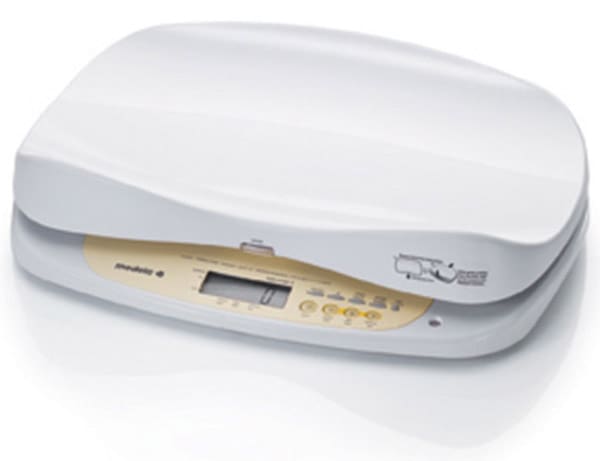SKILLS & STRATEGIES
Pre and Post Breastfeeding Weights
test
Summary:
A 24–hour intake assessment can help determine the total amount of breastmilk transferred from the breast by the baby in a day. This method is most often used when a baby has been gaining weight more slowly than anticipated. Weighing a baby before and after each feed for 24 hours is the most accurate method of determining the total amount of milk consumed.
After 4 weeks, most babies are able to consume 25 to 28 ounces of milk from the breast in a day. Parents can rent pediatric scales with appropriate sensitivity to do pre- and post-feed weight checks at home.
Note: Weight checks are just ONE tool used in a comprehensive lactation assessment. All breastfeeding parents and babies are different, and breastmilk intake will vary throughout any given day.
Equipment Needed:
• Pen and paper or app to record weights
• Pediatric scale accurate to 2 grams(g) or 0.1 ounce(oz). Note: Most commercial scales available for home use are sensitive only to 10 grams(g) or 0.5 ounce(oz).
Steps:

- Weigh your baby once at the beginning of the day. Turn the scale on and check that it reads 0.00. Lay your naked baby on the scale and wait for it to display a weight.
- Before each feeding session, weigh your baby wearing whatever they will wear to feed.Turn the scale on and check that it reads 0.00. Lay your baby on the scale and wait for it to display a weight. Record this pre-feed weight.
- Breastfeed your baby as you normally would. Note that your IBCLC or HCP may want you to note the amount of time spent in each feeding session.
- After you finish feeding your baby, turn the scale on and check that it reads 0.00. Lay your baby on the scale and wait for it to display a weight. Keep your baby clothed as they were while feeding, even if a diaper is wet or dirty. Record this post-feed weight.
- Subtract the pre-feed weight in step 3 from the post-feed weight in step 6 to determine the feeding total. This is the amount of milk your baby transferred from the breast.
For example:
|
8lb 4.7oz: Post-feed weight - 8lb 2.4oz: Pre-feed weight |
9lb. 2.2oz: Post-feed weight - 8lb.15.2oz: Pre-feed weight |
3,482g: Post-feed weight - 3,411g: Pre-feed weight |
|
________ = 2.3oz Amount baby ate |
______ = 3.0oz Amount baby ate |
_______ = 71 g/ml Amount baby ate |
Note: If using pounds (lbs) and ounces (oz), remember that there are ten tenths in an ounce and 16 ounces in a pound. If using grams(g) to determine intake, grams and milliliters(ml) are equivalent.
6. After 24 hours, add all feeding totals together to get a grand total for that 24-hour period, also known as daily intake. Call your lactation consultant (IBCLC) or primary care provider to report your results.
Follow Up:
Frequent follow-up by a qualified lactation professional and healthcare provider is recommended for any breastfed baby that is not gaining weight adequately.
Resources:
Influence of test weighing before/after nursing on breastfeeding in preterm infants.
https://www.ncbi.nlm.nih.gov/pubmed/20150780
Validation of Test Weighing Protocol to Estimate Enteral Feeding Volumes in Preterm Infants.
https://www.ncbi.nlm.nih.gov/pubmed/27587072
Blog: Trusting and Testing Weights by Kimberly Lee, MD, neonatologist and member of the Academy of Breastfeeding Medicine
https://bfmed.wordpress.com/2017/01/06/trust-and-test-weights/
This and other how-to guides are available as free downloads

